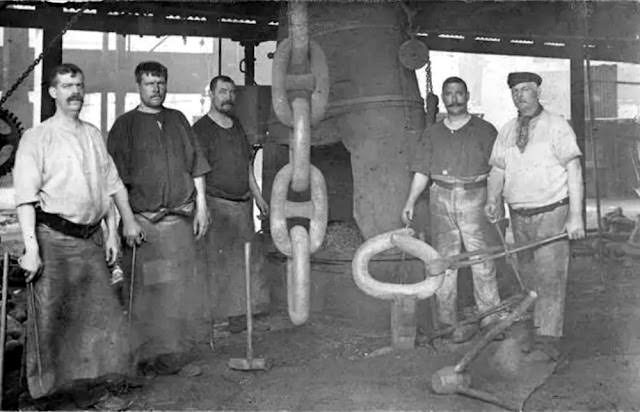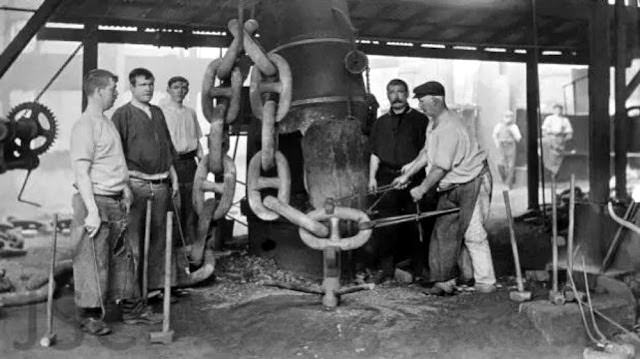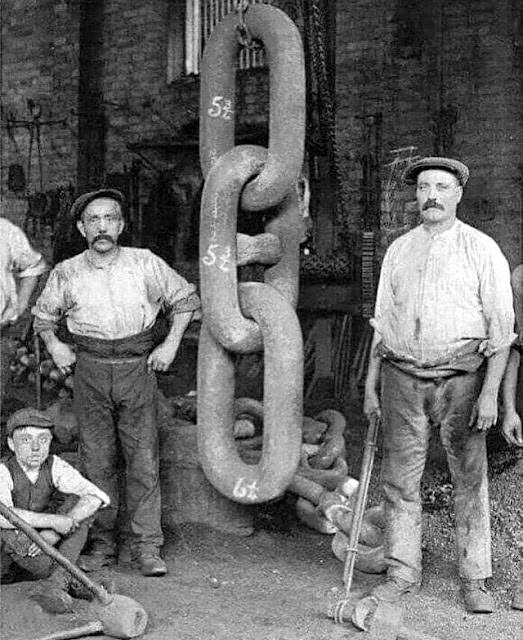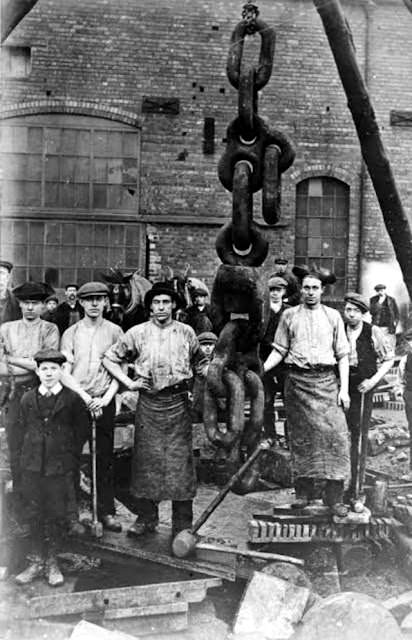The RMS Titanic, the iconic ocean liner that met its tragic fate in 1912, was equipped with engineering marvels of its time, and one such marvel was its anchor chain. The anchor chain of the Titanic is an often overlooked yet critical component that played a vital role in the ship’s functionality. This article delves into the details of the chain used for the Titanic’s anchor, exploring its material, weight, dimensions, and overall significance.

The Titanic’s anchor chain was made of high-quality wrought iron. Wrought iron was the preferred material for such applications due to its excellent tensile strength and resistance to corrosion, essential qualities for maritime use. The production of this chain was a feat of engineering and metallurgy at the time, reflecting the advanced industrial capabilities of the early 20th century.
Dimensions and Specifications
The Titanic’s anchor chain was a massive assembly, reflecting the scale of the ship itself. Each link in the chain was substantial, and the entire length was necessary to provide the required holding power for such a large vessel. The exact dimensions of each link and the total length of the chain were designed in accordance with maritime engineering standards of the time, ensuring that they could handle the stresses of anchoring the Titanic.

Weight and Strength
One of the most remarkable aspects of the Titanic’s anchor chain was its weight. The chain was incredibly heavy, with each link weighing a significant amount. This weight was necessary to counterbalance the Titanic’s massive displacement. The overall strength of the chain was a critical factor, as it needed to withstand the forces of the ocean, including strong currents and the immense weight of the anchor and ship.

Anchor and Chain Mechanism
The anchor system of the Titanic was a complex arrangement. The anchor itself was a large, heavy piece of forged metal designed to grip the seafloor securely. The chain connected to this anchor had to be robust enough to handle the weight and the forces involved when the anchor was dropped or hoisted. The mechanism for deploying and retrieving the anchor involved a series of winches and capstans, which were powered by the ship’s steam engines. This system allowed the crew to control the anchor and chain with precision, despite their massive size and weight.

Role in the Titanic’s Operations
The chain and anchor played a crucial role in the Titanic’s operations, particularly when docking at ports or when it was necessary to stabilize the ship at sea. The ability of the anchor chain to secure the ship in position was critical for the safety and operational efficiency of the Titanic. It was a fundamental component in the ship’s overall design, allowing it to undertake its intended role as a transatlantic passenger liner.
Manufacturing and Testing
The manufacturing process of the Titanic’s anchor chain involved forging each link and assembling them into a continuous length. This process required precision and expertise, as any flaws in the chain could have catastrophic consequences. After manufacture, the chain underwent rigorous testing to ensure its strength and durability. These tests were designed to simulate the harsh conditions of the sea, ensuring that the chain could withstand the rigors of ocean travel.
Installation and Maintenance
Installing the anchor chain on the Titanic was a complex operation, requiring skilled labor and careful coordination. The chain had to be transported to the shipyard, hoisted aboard the vessel, and properly connected to the anchor and the ship’s winching mechanism. Regular maintenance was also crucial to ensure the chain’s integrity.


